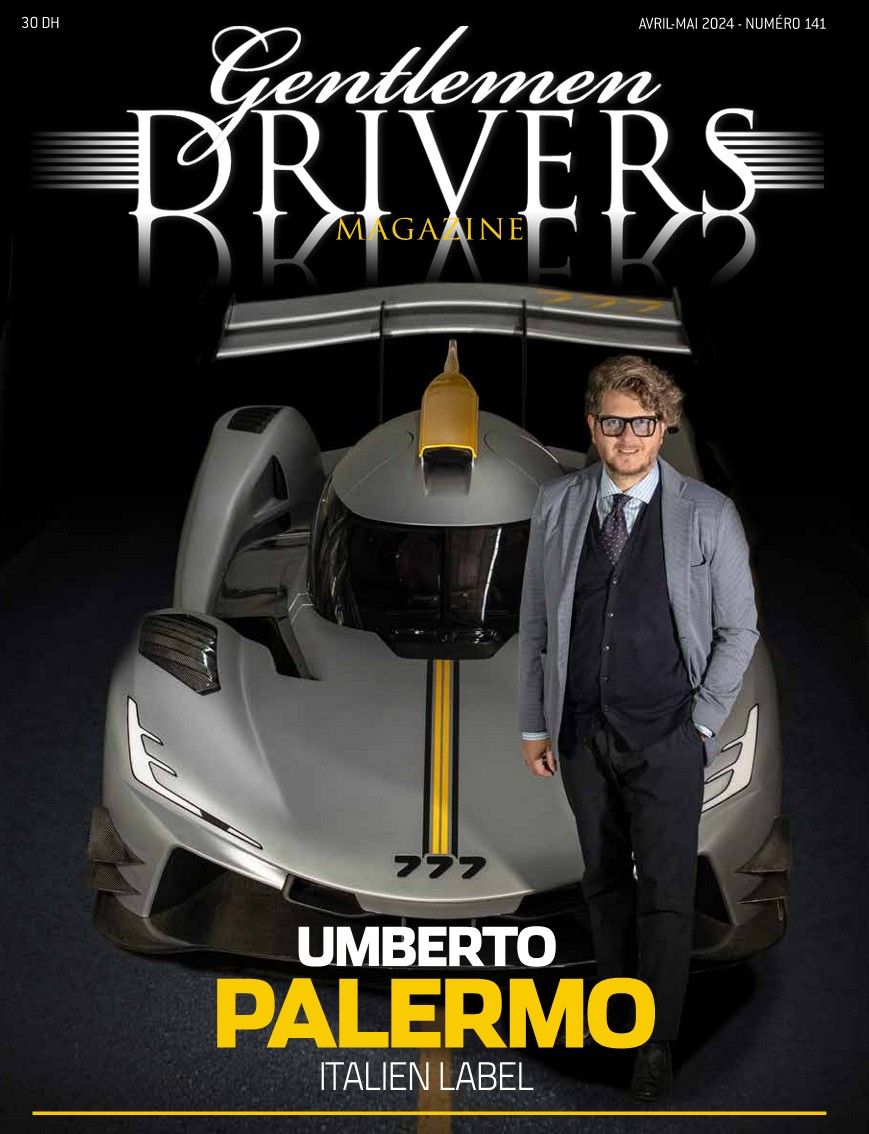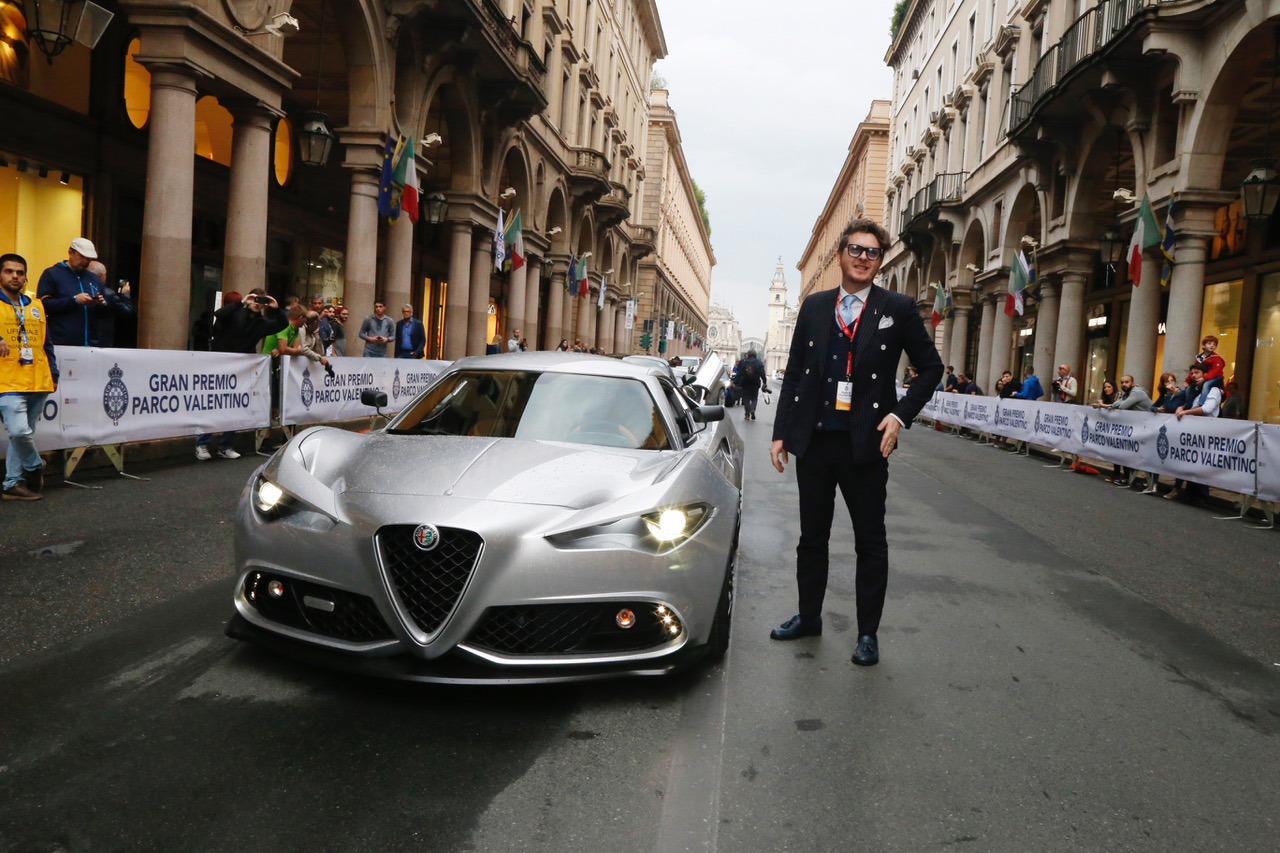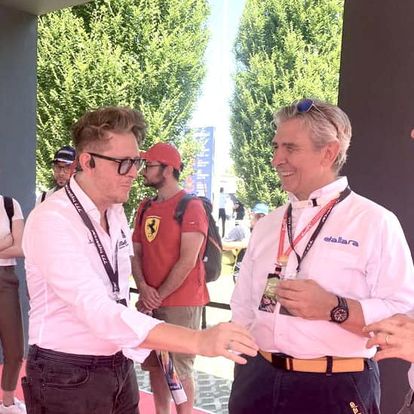Coming from humble origins, born into a working-class family, Umberto Palermo started out as a labourer himself. After moving to Turin to pursue his passion for car design, he joined the Idea Institute and worked his way up the ladder, from simple designer to head of department in 2007. Then the World’s crisis hit and everything changed. After leaving the Idea Institute, he opened his own company, with three employees. UP Design (from the initials of Umberto Palermo) was born. In just a few years, he managed to take on more than forty people and Wind major new customers. With a design laboratory in Moncalieri and a production site in Rivoli, he has succeeded in making a name for himself as a designer who excels in the art of made-to-measure. At the same time, this native of Turin has launched the concept of a café, designed to bring together designers, musicians, journalists and, more generally, anyone who brings creativity to the table. Because it’s by bringing people together and exchanging opinions and creative ideas that great projects come to fruition. Palermo’s declared ambition is nothing less than to become the spokesperson for the renaissance of automotive design in Turin.
Discover the captivating story in PDF
How did you become passionate about cars?
My passion for cars goes back to my childhood. By the age of ten, I had an endless collection of model cars. As a child, I loved taking scale models apart, to change their colors and shapes.
You started your career at the Idea Institute. How did you come by this opportunity?
In 2000, I had a great job opportunity, at the behest of Ermanno Cressoni (an important designer who designed many Alfa Romeo, Fiat, Lancia and later became a consultant for Idea Institute), I was hired by Idea Institute as a young design manager to create a new working group dedicated to Fiat, Fiat Professional, Alfa Romeo and Lancia projects. It was a wonderful experience that lasted ten years, during which I was lucky enough to work closely with Roberto Giolito as supervisor. Thanks to Giolito, I grew professionally and had the opportunity to contribute to the design of many cars and commercial vehicles of the former Fiat Group.
What projects have you worked on at the Institute?
During my time at Idea Institute, I had the opportunity to work with a team of twenty people on numerous projects, including Fiat Ducato, Fiat Qubo, Fiat Punto Evo, Fiat Trepiuuno, Fiat 500L, Lancia Delta and many others. I have also designed for many foreign groups, such as Hyundai, Honda, Faw, Dongfeng, Ford, etc. At the same time, I’ve designed products such as household appliances for Ariston, Indesit and Candy, tractors for Same and sofas for B&B. My experience at the Idea Institute was also very important, because in 2009, at the Geneva Motor Show, I presented the ERA, a two-seater spider, a demonstration car that I had designed, and in 2010, again at the same show, I presented the SOFIA, a coupé saloon. These two experiences gave me the foundations on which to create Mole Costruzione Artigianale.
You then launched UP Design at a time of crisis. What difficulties did you encounter at the start?
In 2008, because of the global financial crisis, Idea Institute was sold to a financial fund, and I didn’t agree with their ideas. In 2010, I decided to open my own company, because I wanted to pursue my dream of becoming an established designer. It was a very difficult time historically, but fortunately, almost all the clients I was working with at the Idea Institute decided to continue working with me in my new company, which meant I had a lot of work to do, despite the crisis. At the beginning, there were just three of us, but in a short space of time, the working group grew to over ten people. The biggest difficulty was no longer having an organization like that of the Idea Institute, but by opening my own business, I not only had to design, but also take care of other aspects such as administration, communication and above all, I always had to find new clients. It was very difficult at first, but as time went by, I got managers to help me.
Have the results lived up to your expectations?
I’m very satisfied with the results I’ve achieved with my company. I concentrated a lot on creating a brand, spending everything I earned on building show cars so that the world would know me. Immediately after the birth of UP-Design, with the first money I earned, I designed and built the Mole Cesistenza Artigianale VITTORIA. With this model I inaugurated a series of show cars, for example: LUCREZIA, 001, LUCE, VALENTINO, ALFA MOLE, FIAT 124 MOLE, ALMAS. I never sought to establish personal wealth. I firmly believe that the real wealth lies in being recognized.
You were also behind the opening of a café to bring designers together. What was the aim of this initiative?
I created a meeting place for designers, journalists, writers, and car collectors, where they can exchange ideas. Good ideas don’t always develop and sometimes they can fail for many reasons. My intention was not to make a simple restaurant, but to create a place inspired by the literary cafés of the 18th century, where culture was more important than food. I fell in love with the project, but I was probably too young and too lonely to let it develop and come to fruition. To this day, the project is remembered as a shining example of aggregation, and that’s good enough for me. Perhaps one day, when I’m older, I’ll try again, learning from the mistakes I made.
The relaunch of the Alfa 4C was a godsend for purists. Why did this project remain a dead letter?
After numerous show cars under the Mole Costruzione Artigianale brand, I asked FCA managers, who at the time were Marchionne and Altavilla, to give me the opportunity to create unique models and I was delighted to be given the opportunity to do so, in co-branding with FCA. I showed them my renderings and they liked them immediately, but above all, they created a great story to tell. The first unique piece was the Fiat 124 Mole Costruzione Artigianale, but in this case, it involved small modifications that nevertheless gave a different interpretation of the original. But the most important project was the Alfa Romeo 4c Mole Costruzione Artigianale. I had the opportunity to completely redesign it to my liking, I liked it straight away and they allowed me to build it, transforming it into a real Alfa Romeo by Umberto Palermo Design. It wasn’t a project for just one car, but we imagined building a hundred, but unfortunately, with the death of Marchionne and the departure of Altavilla, the project stopped at just one. Many people don’t know that the Almas Mole Costruzione Artigianale concept presented at Geneva 2019, together with the Alfa 4c Mole Cappello Artigianale, served as the basis for the creation of a new Alfa Romeo Mole Costruzione Artigianale sports car. We used the chassis of the 4c, modified to create a larger car to accommodate a 6-cylinder engine. Alongside these projects, others were not completed. In the future, I will publish four projects between Alfa Romeo and Maserati that have never been realized and which, I assure you, are breathtaking. Even though only one Alfa 4C Mole was produced, for me it was an important and unequalled achievement, because designing and producing an Alfa is like touching Paradise.
What was the idea behind the launch of the Mole Urbana project? Does it correspond to your vision of the mobility of the future?
The Mole Urbana project came about because it was clear that we needed to rethink the small urban car. With city centers becoming increasingly congested with ever larger cars, it was clear that there was a need for very small cars. At the same time, travel speeds were being reduced to as low as 30 km/h. I took a close look at what some car companies were starting to produce. When the Citroën Ami was presented, the Mole Urbana project was almost ready, and I realized that the time had come to present my project to the press. The most important thing I came up with was that it wasn’t enough to put an electric motor on a body built using the usual production processes, but that it was very important to change the method of construction, to reduce the production of CO². My project does not use energy-intensive techniques, the sheet metal is not printed with presses, and I do not use injection molds for the plastics. To produce Mole Urbana, I use extruded aluminum profiles for the bodywork and stainless-steel profiles for the frame. I use stainless steel to avoid cataphoresis, which is unfortunately a highly polluting corrosion protection system. Some components are thermoformed using recycled ABS. This construction technique allows me to produce many different designs, to create two-seater, three-seater, and four-seater models. Finally, there are also a number of models dedicated to the world of work. I’m a designer and becoming an industrialist to produce cars is not easy. I had to pass a lot of tests to get my car manufacturer’s license and then I needed a big factory. In 2023, I managed to buy an old 10,000 m² factory near Turin and it took me almost a year to restore it. I started with an idea but had to overcome many obstacles. Today, the factory is finished and, after many sacrifices, we’re starting pre-production. I’m convinced that electric ‘quadricycles’ are an excellent solution for urban mobility. Sales of electric quadricycle are doubling year on year. Mole Urbana aims for safety and a very wide range. It’s a truly Italian project, because it was conceived, designed, and built entirely in Italy, with components sourced from European companies.
What motivated you to design the 777 hypercar, desired by entrepreneur and collector Andrea Levy and designed by Dallara? Are you satisfied with the result?
My original profession is as a designer and when my friend Andrea Levy presented me with his project, I was very impressed and immediately accepted the challenge. I found myself working with a Mole Urbana that does no more than 80 km/h all the way up to a 350 km/h supercar. The best opportunity was to come face to face with Dallara’s great engineers. Thanks to them, I gained a lot of experience on the subject of aerodynamics and learnt a lot of things. My aim was to respect the constraints imposed by Dallara, but at the same time to give a racing car a strong personality. I’m very happy with the result, because it’s a project that takes you towards a dream.
What do you think of current car design and what are the prospects for the future?
In recent years, also because of the electrification of the car, it has been necessary to find new languages and new stylistic features. I see many carmakers striving to find the right path for the future, while remaining attached to tradition. I was positively struck by the latest BMW Neue Klasse concept. Another example I’ve enjoyed is the work Lotus has done with the Eletre and Emeya, two stylistically exciting models that embody the current nature of the luxury electric car world and are fascinating to look at. I appreciate and embrace electrification, but I still have eight-cylinder combustion engines in my heart. I’m in love with the Maserati brand and have owned two Ghibli cars. Their design is still beautiful today, recognizable and bewitching like a gorgeous woman. I hope that in the future, the new Maserati models will get back on track, with an exclusive design.
What are your future projects?
At the moment, I’m concentrating both on the Mole Urbana industrial project where, as well as production, we still have to work on developing style, but also on a very important project for us, with the Mole Costruzione Artigianale brand. For this project, we are creating a roadster, with an eight-cylinder combustion engine, whose shapes are very captivating and exciting.
Who is your favorite designer?
I’m fascinated by many designers. In particular, I’ve always appreciated and admired Flaminio Bertoni for his masterpieces, but also for his personality. I have Giorgio Armani in my heart, because he represents ‘harmony’, the most important virtue for creating timeless objects.
Are you interested in classic cars? If so, which model do you prefer?
I regard classic cars in the same way as literature. Culture wouldn’t exist without books, and historic cars are the basis for designing the future. If you don’t like cars from the past, you don’t like beauty. I’m enchanted by the observation of their shapes, but above all, what fascinates me most is that their forms bear witness to the era in which they were produced. It’s easy to understand how the Art Nouveau of the late 19th and early 20th centuries influenced the shapes of cars from that period, or how the ridges of the 1970s bear witness to a tumultuous period in social history. I’d like to own a lot of them but, strangely, I find satisfaction in just looking at them.
What are your other hobbies?
My favorite pastime is doing what I do every day: devoting myself to my family and work.
Biography:
1973: born in Palermo
1994: Graduates in art from Villareale di Monza
2004: Director of the design department at Idea Institute in Moncalieri
2010: founds Umberto Palermo Design





















